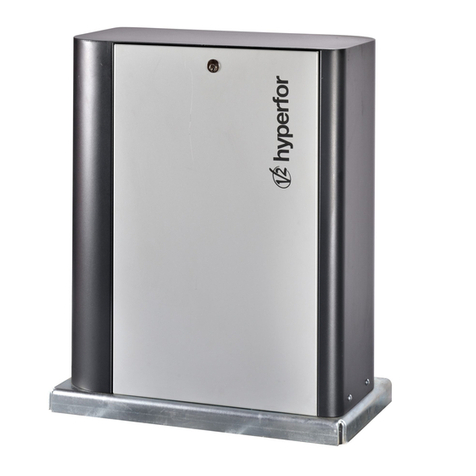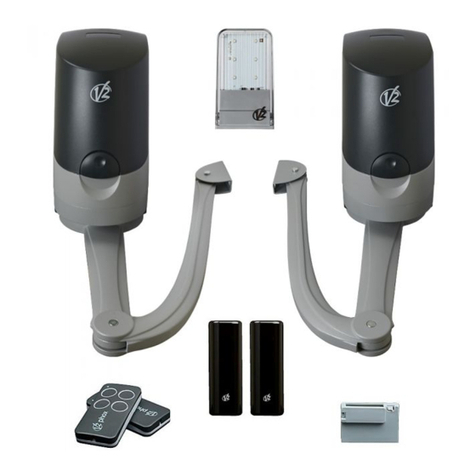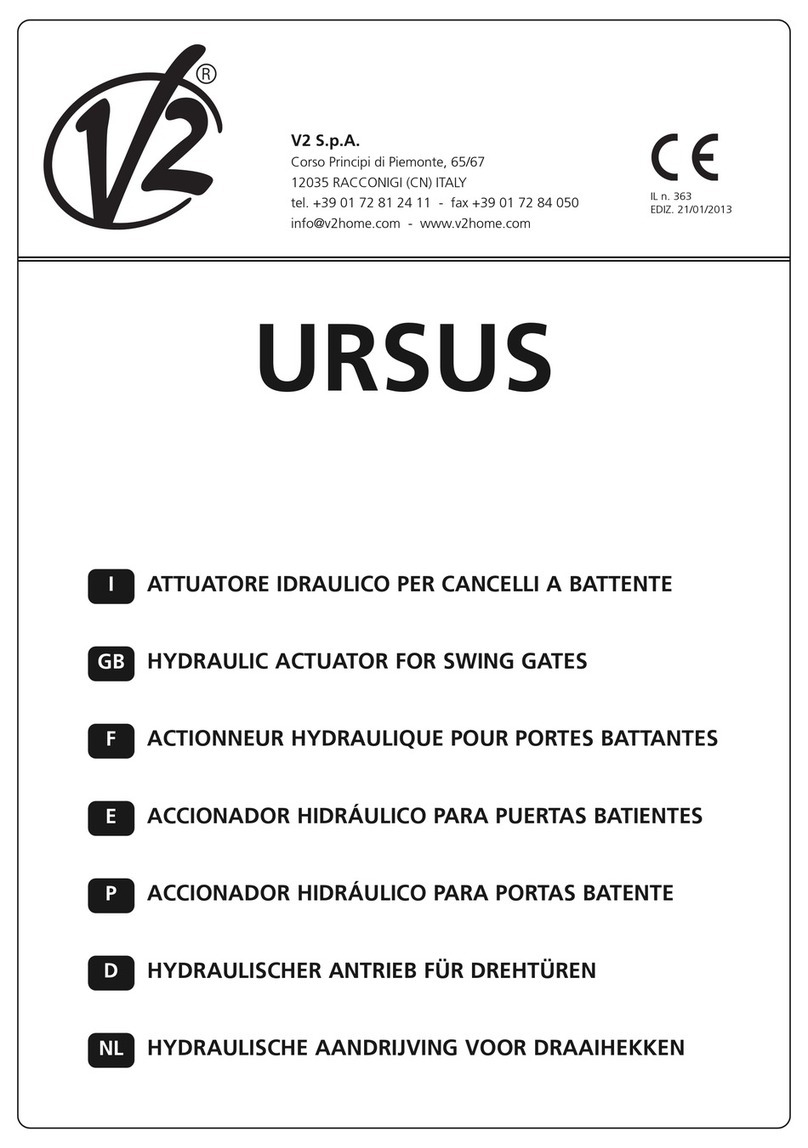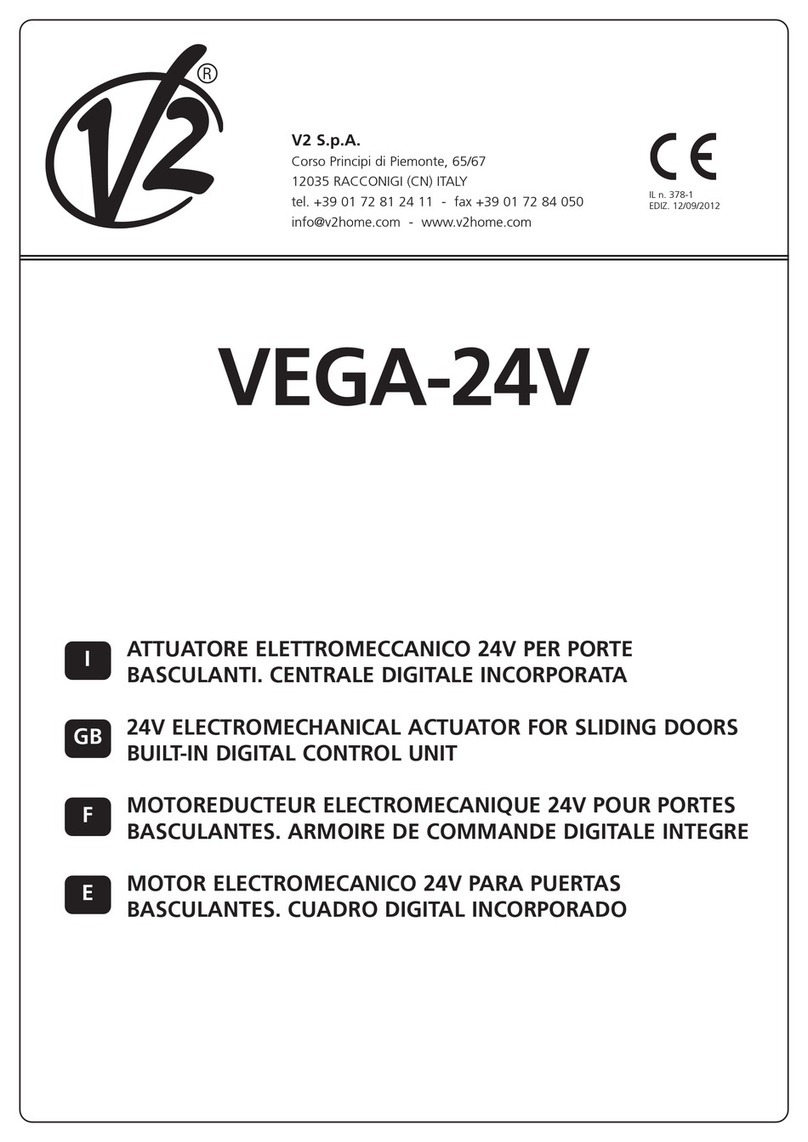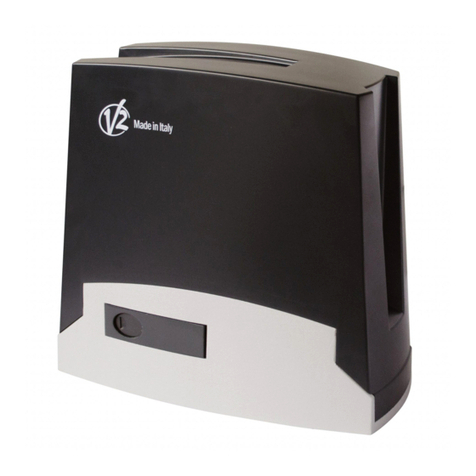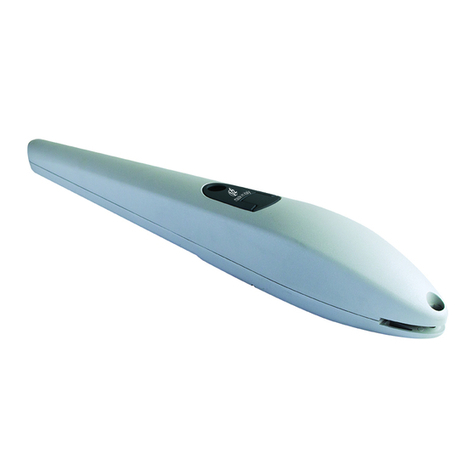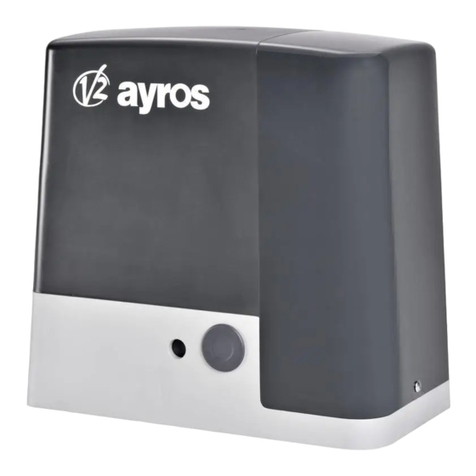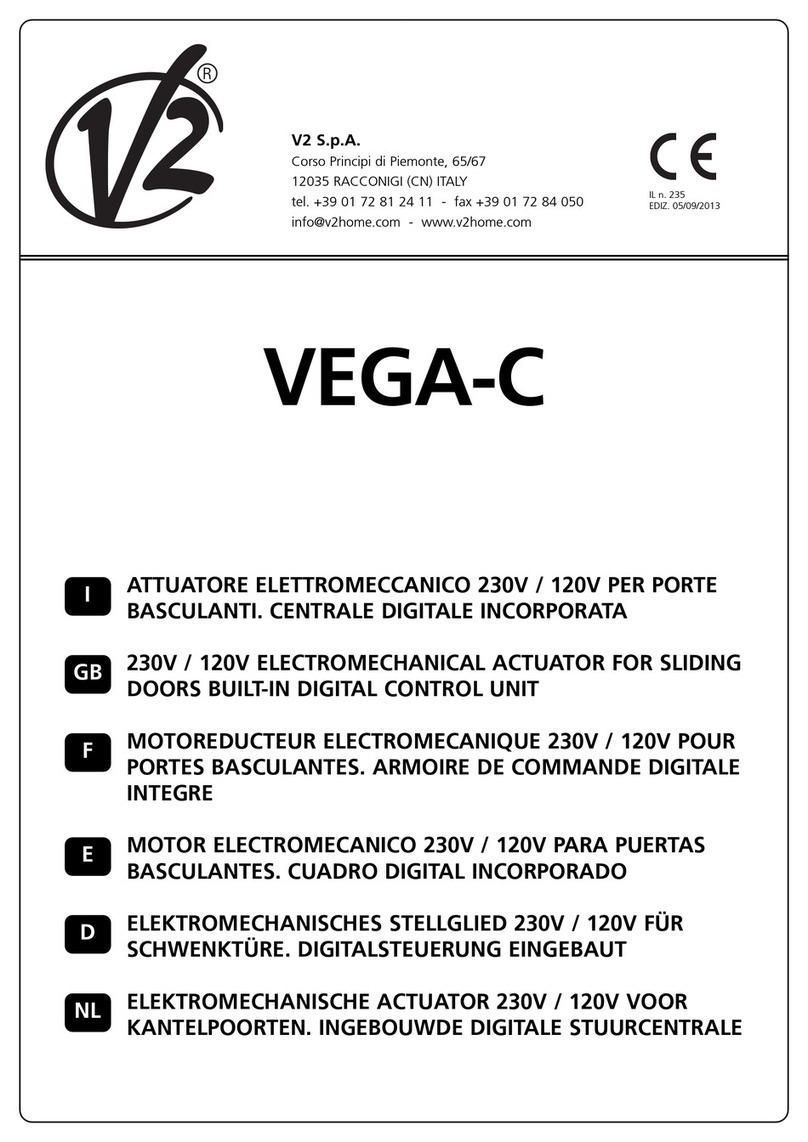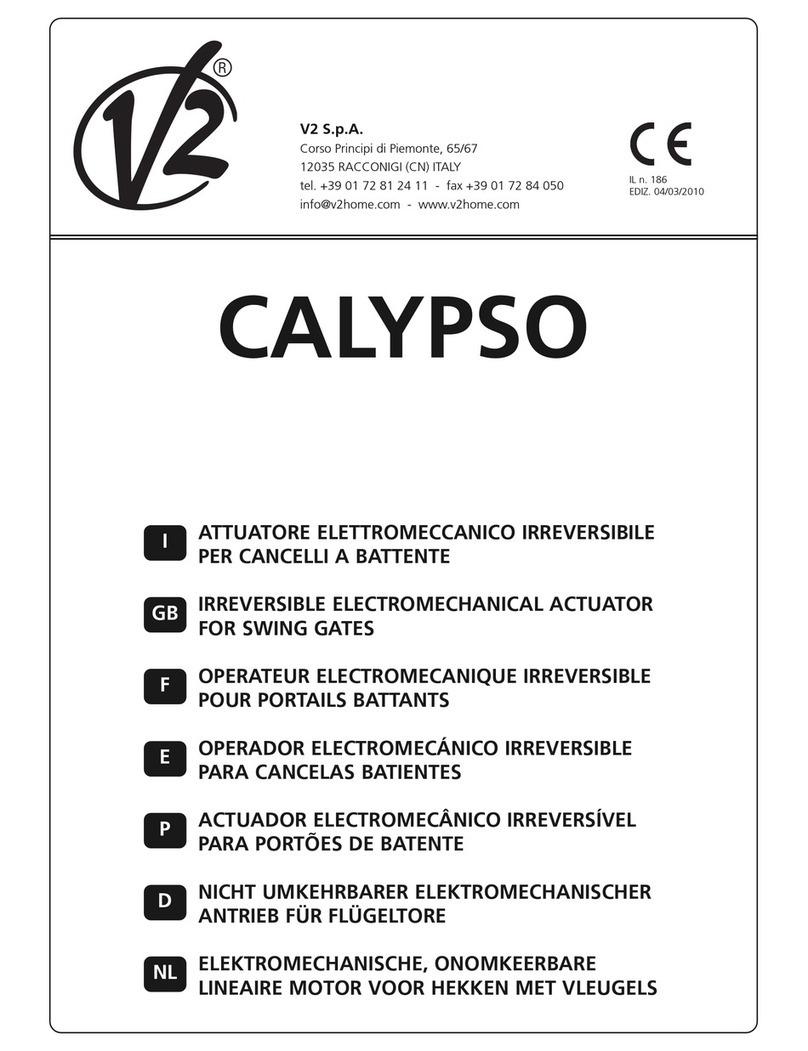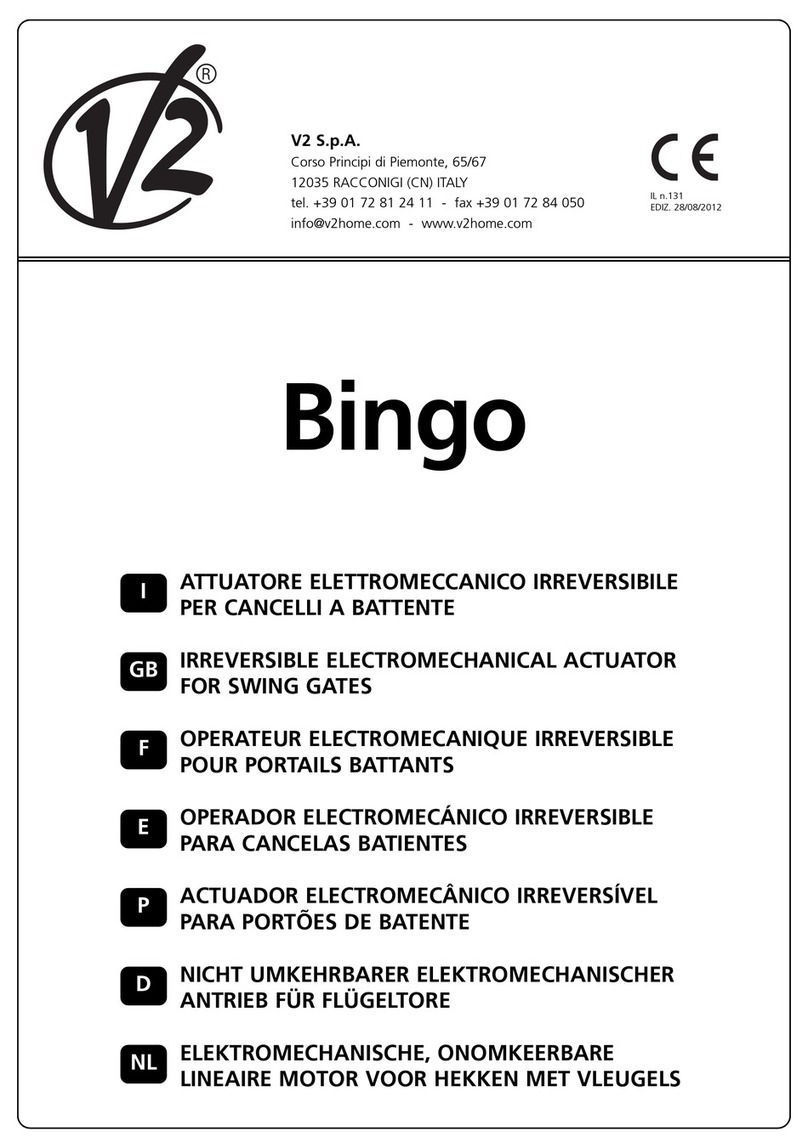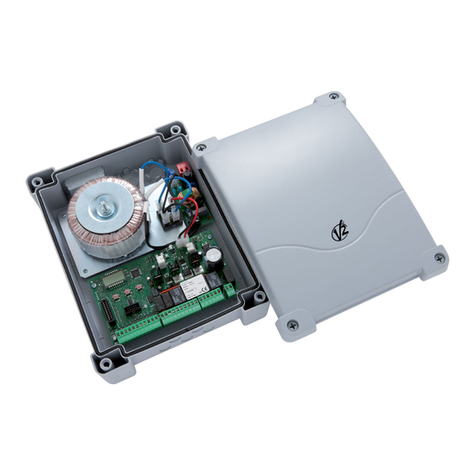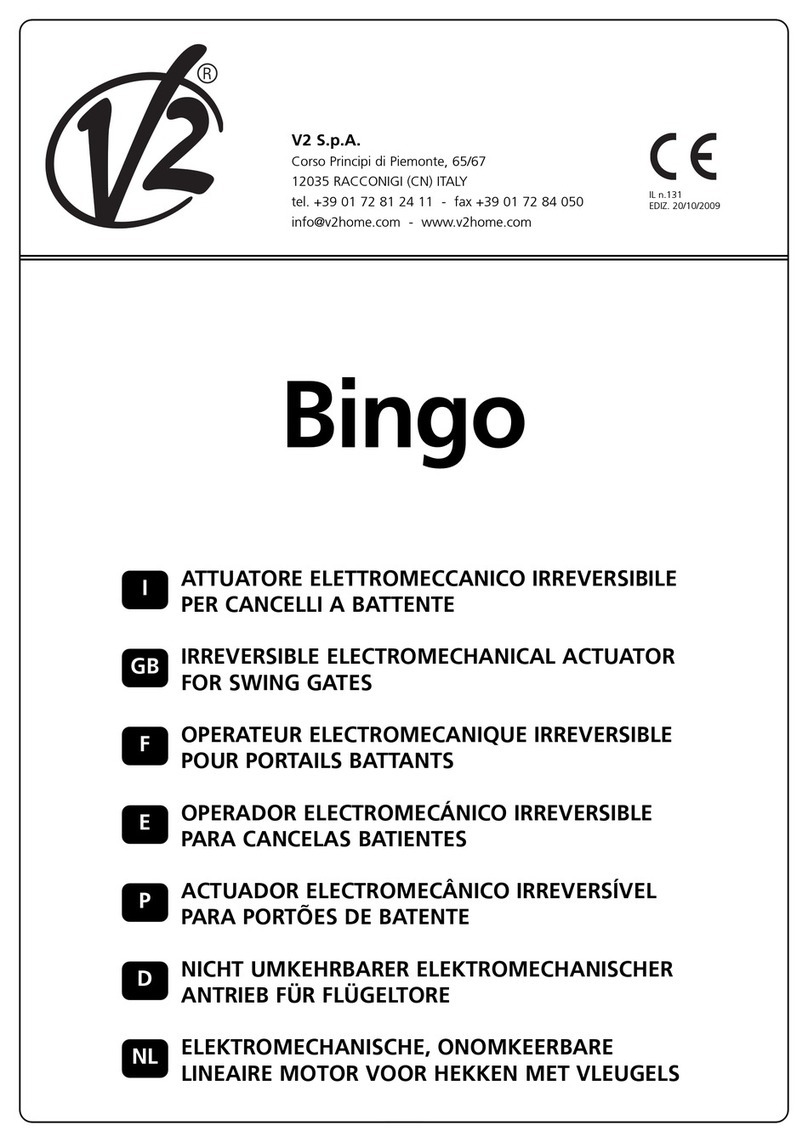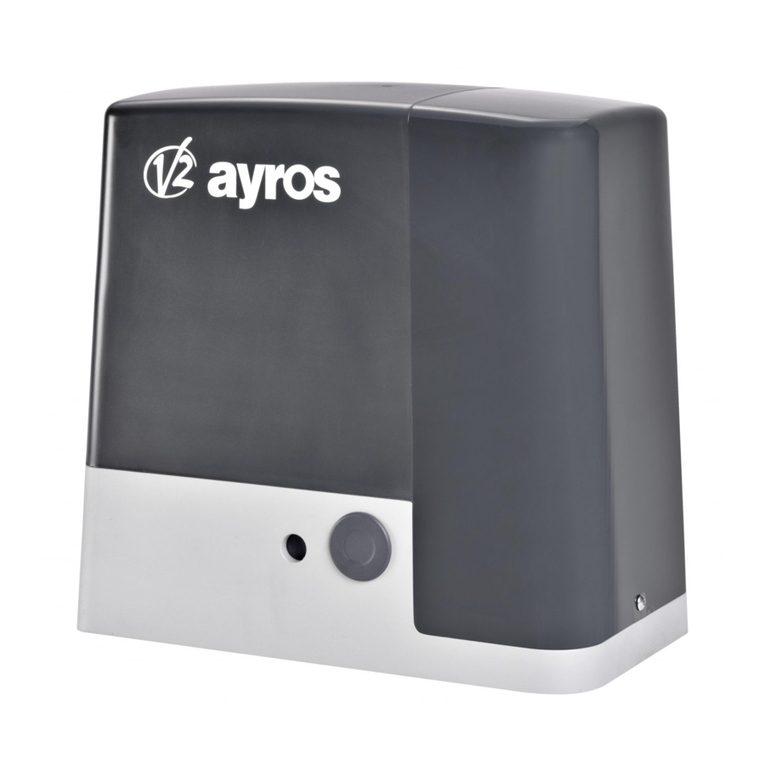EN LISH
30
IMPORTANT REMARKS
For any installation problems please contact
V2 S.p.A. TEL. (+39) 01 72 81 24 11
V2 S.p.A. has the right to modify the product without
previous notice; it also declines any responsibility to
damage or injury to people or things caused by improper
use or wrong installation.
mPlease read this instruction manual very carefully
before installing and programming your control unit.
• This instruction manual is only for qualified technicians, who
specialize in installations and automations.
• The contents of this instruction manual do not concern the
end user.
• Every programming and/or every maintenance service
should be done only by qualified technicians.
AUTOMATION MUST BE IMPLEMENTED IN COMPLIANCE
WITH THE EUROPEAN RE ULATIONS IN FORCE:
EN 60204-1 (Machinery safety. electrical equipment of
machines, part 1: general rules)
EN 12445 (Safe use of automated locking devices, test
methods)
EN 12453 (Safe use of automated locking devices,
requirements)
• The installer must provide for a device (es. magnetotermical
switch) ensuring the omnipolar sectioning of the equipment
from the power supply.
The standards require a separation of the contacts of at
least 3 mm in each pole (EN 60335-1).
• The plastic case has an IP55 insulation; to connect flexible
or rigid pipes, use pipefittings having the same insulation
level.
• Installation requires mechanical and electrical skills,
therefore it shall be carried out by qualified personnel only,
who can issue the Compliance Certificate concerning the
whole installation (Machine Directive 2006/42/CEE, Annex IIA).
• The automated vehicular gates shall comply with the
following rules: EN 13241-1, EN 12453, EN 12445 as well as
any local rule in force.
• Also the automation upstream electric system shall comply
with the laws and rules in force and be carried out
workmanlike.
• The door thrust force adjustment shall be measured by
means of a proper tool and adjusted according to the max.
limits, which EN 12453 allows.
• We recommend to make use of an emergency button, to be
installed by the automation (connected to the control unit
STOP input) so that the gate may be immediately stopped
in case of danger.
• The appliance is not to be used by children or persons with
reduced physical, sensory or mental capabilities, or lack of
experience and knowledge, unless they have been given
supervision or instruction.
• Children being supervised do not play with the appliance.
• For correct installation of the system, we recommend
following the instructions issued by UNAC very carefully,
which can be consulted at the following web site:
www.v2home.com
EC DECLARATION OF INCORPORATION FOR
PARTLY COMPLETED MACHINERY
(Directive 2006/42/EC, Annex II-B)
The manufacturer V2 S.p.A., headquarters in Corso Principi di
Piemonte 65, 12035, Racconigi (CN), Italia
Under its sole responsibility hereby declares that:
the partly completed machinery model(s):
FORTECO1200-230V
FORTECO1800-230V
FORTECO2200-230V
Identification number and year of manufacturing:
typed on nameplate
Description: electromechanical actuator for gates
• is intended to be installed on gates, to create a machine
according to the provisions of the Directive 2006/42/EC.
The machinery must not be put into service until the final
machinery into which it has to be incorporated has been
declared in conformity with the provisions of the Directive
2006/42/EC (annex II-A).
• is compliant with the applicable essential safety requirements
of the following Directives:
Machinery Directive 2006/42/EC (annex I, chapter 1)
Low Voltage Directive 2006/95/EC
Electromagnetic Compatibility Directive 2004/108/EC
Radio Directive 99/05/EC
The relevant technical documentation is available at the national
authorities’ request after justifiable request to:
V2 S.p.A., Corso Principi di Piemonte 65
12035, Racconigi (CN), Italy
The person empowered to draw up the declaration and to
provide the technical documentation:
Cosimo De Falco
Legal representative of V2 S.p.A.
Racconigi, 11th January 2010






